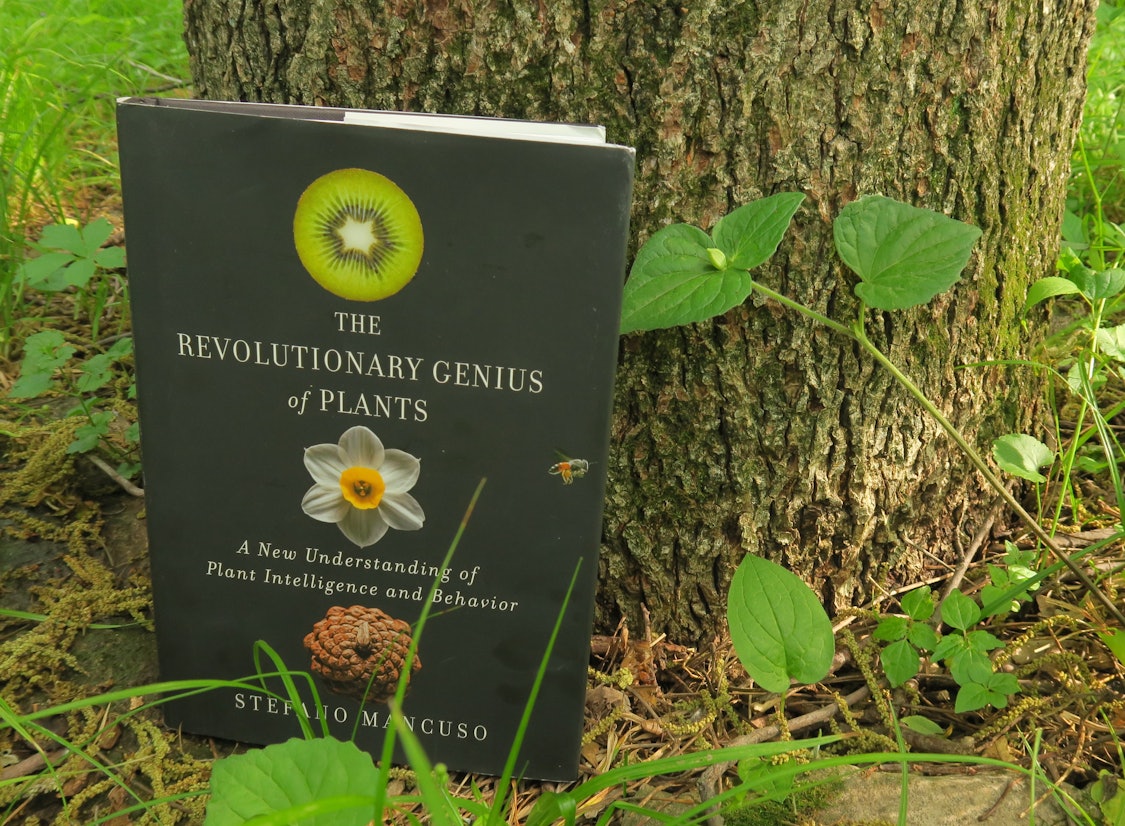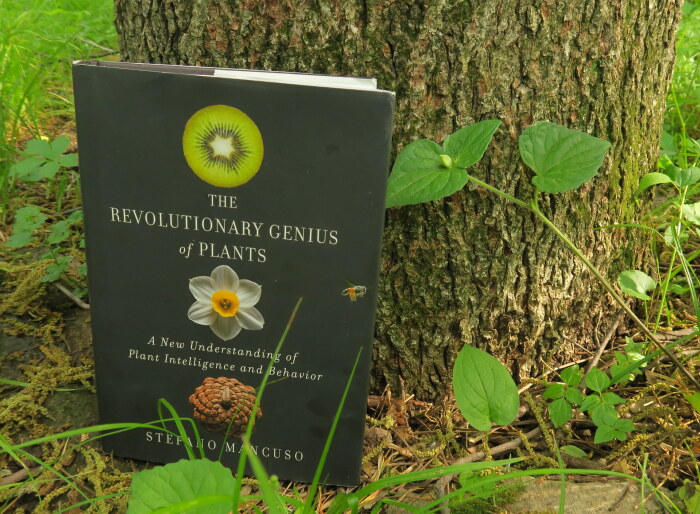How can plants move without muscles? How do their root systems explore the soil? How do they adapt to changes in the environment, and sometimes survive extreme challenges such as fire or drought?
Stefano Mancuso explores those and other questions in The Revolutionary Genius of Plants: A New Understanding of Plant Intelligence and Behavior. The book isn’t new (first published in 2018), but it was new to me after my brother gave a copy to one of my children.
Although the book doesn’t directly discuss prairie and woodland habitats that have inspired most of Bleeding Heartland’s wildflower content, Mancuso’s provocative theories are relevant to Iowa’s native plants as well.
The book jacket describes Mancuso, a professor at the University of Florence in Italy, as “the world’s leading authority in the field of plant neurobiology, which explores signaling and communication at all levels of biological organization.” In a recent interview with The Observer’s Killian Fox, he explained how he became interested in the field.
One of my tasks during my doctorate was to understand how a root growing in the soil was able to move around an obstacle. My idea was to film this movement, but I saw something different: the root was changing direction well before touching the obstacle. It was able to sense the obstacle and to find a more convenient direction. That was my first eureka moment, where I started to imagine that plants were intelligent organisms.
One of the author’s central arguments is that plants are “better problem solvers” than animals. Faced with any kind of challenge, animals have one tool in the box: move to another location (to find food or water, escape predators, avoid severe weather). Since plants are rooted to one spot, they need other ways to adapt to changing circumstances. They have developed incredibly complex root systems and other ways to acquire nutrients or information while avoiding predators. They also have some ingenious tricks to aid their reproduction, or spread their seed.
In the chapter on “moving without muscles,” Mancuso discusses at length experiments with Erodium cicutarium, a European member of the geranium family that has exploding seed pods. Several plants Bleeding Heartland has featured use the same seed dispersal method, including the native violets and jewelweed as well as the non-native Siberian cranesbill (also in the geranium family).
I photographed the book near a violet plant in my yard that has a developing seed pod between two of the arrow-shaped leaves.

Mancuso’s discussion of plants that secrete nectar in other areas as well as in flowers reminded me of partridge pea, a summer wildflower that’s prevalent across Iowa.
As some other reviewers have pointed out, many of this book’s anecdotes about plant abilities don’t support a claim to “intelligence,” so much as a testament to the power of natural selection. For instance, Mancuso argues that some plants “manipulate” insects or other animals by producing substances that can be addictive. But it stands to reason that evolution will favor plants that are more pleasing to pollinators and seed distributors. That doesn’t prove any individual plants have adapted to become more alluring.
Similarly, Mancuso discusses how certain lentils and cereal grains (and their mimics) have used “tricks and deceptions” to get humans to cultivate them far and wide. But that development doesn’t need to involve any deliberate process on the part of the plant. Michael Pollan developed the “King Corn” analogy more than 20 years ago. (“One has to wonder whether corn hasn’t at last succeeded in domesticating us.”)
Later chapters in the book explore how the structure of plants and the sensitivity of their root systems has informed cutting edge work not only in agriculture (which would be expected), but also in diverse fields like architecture, robotics, and space exploration. As a fan of Edward O. Wilson’s work, I appreciated how Mancuso considers the similarities between the collective intelligence of social insects—bees, ants, termites—and trees or root systems that seem to operate like large colonies, with webs of communication.
All in all, The Revolutionary Genius of Plants is a quick and enjoyable read for anyone with a casual interest in botany. It made me want to pick up Mancuso’s latest book, Tree Stories: How trees plant our world and connect our lives.
P.S.—Two years ago, Bleeding Heartland author Lora Conrad reviewed a bunch of guides for identifying Iowa wildflowers, shrubs, trees, and weeds.


2 Comments
This sounds like a really interesting book...
…and if it inspires more interest in plants, that will be a very good thing. Plant blindness is one of the many serious threats to plant biodiversity.
PrairieFan Thu 1 Jun 3:07 PM
Thanks
Sounds like a fun and interesting read.
The root behavior around obstacles reminds me of fungus behavior described in Merlin Sheldrake’s book Entangled Life.
Sheldrake describes entanglements happening underground among roots and fungi, passing info and even nutrients in both directions — root to fungus, fungus to root.
—
“One has to wonder whether corn hasn’t at last succeeded in domesticating us.”
Ha!
No, I’m not a tobacco user. But tobacco sure has an insidious way of using me.
Fly_Fly__Fly_Away Thu 1 Jun 7:41 PM